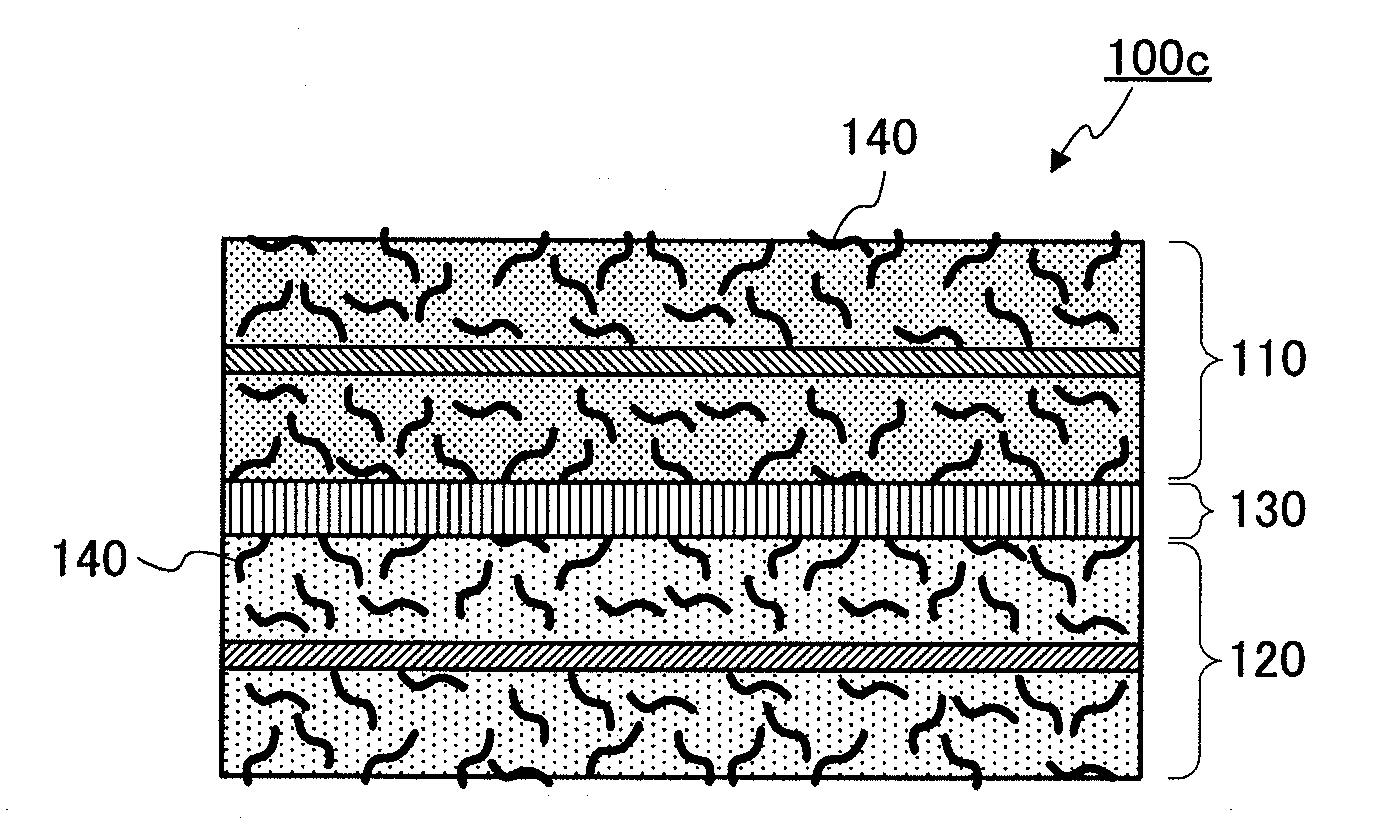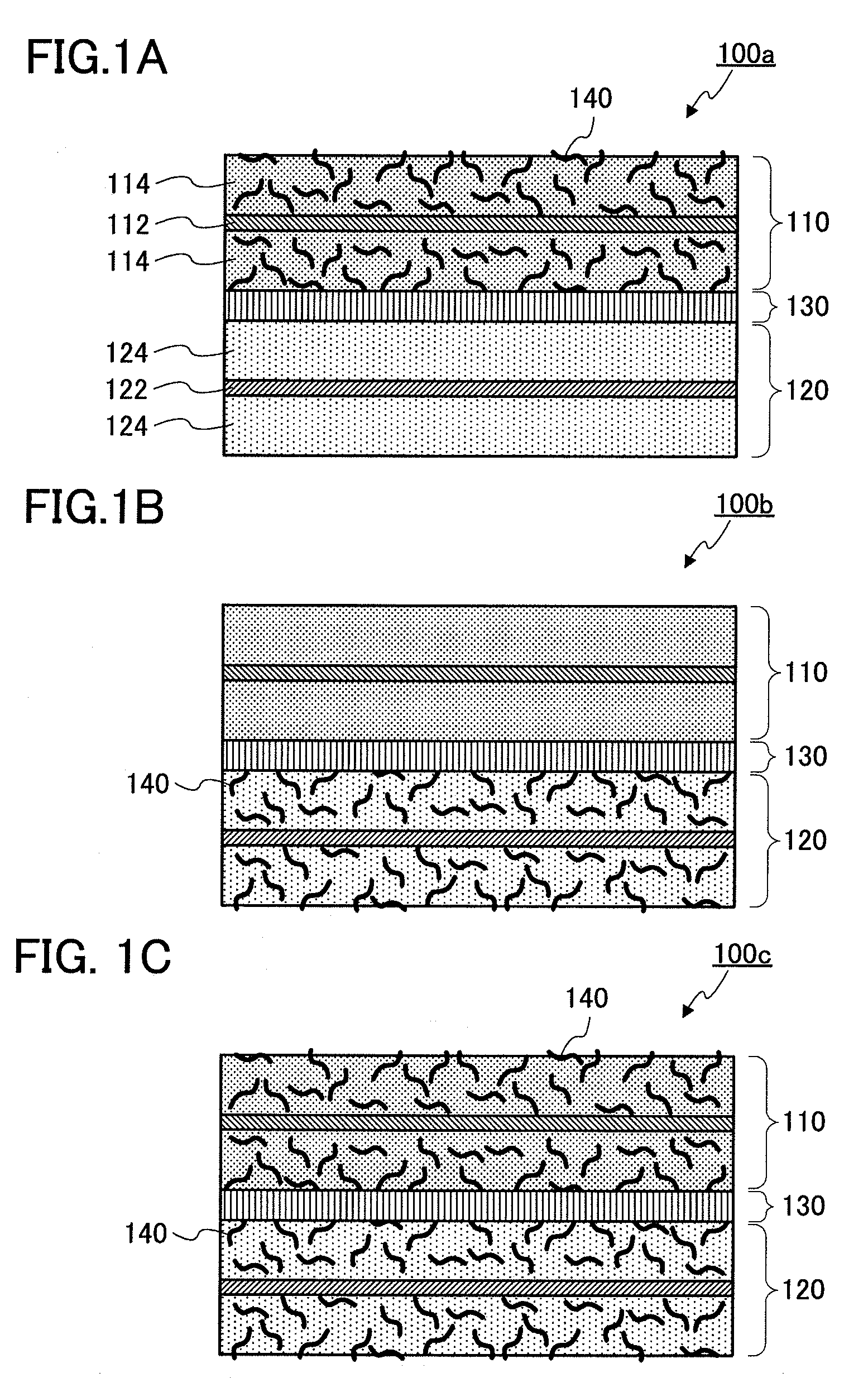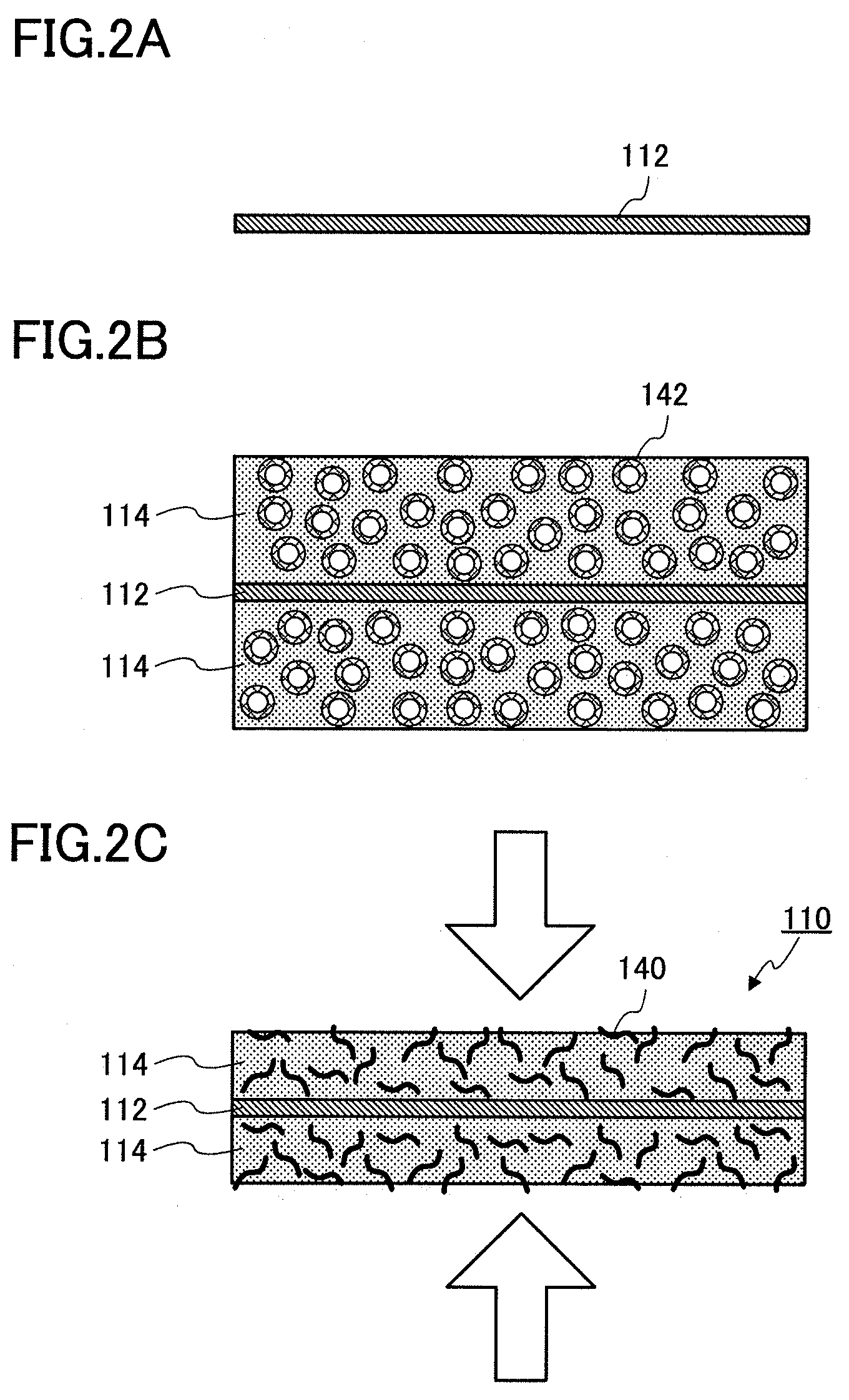Rechargeable lithium ion battery and method for producing the same
a lithium ion battery and rechargeable technology, applied in the manufacture of final products, cell components, electrochemical generators, etc., can solve the problems of inability to increase inability to increase the active material density, and inability to roll rolling, so as to increase the capacity of rechargeable lithium ion batteries, increase the active material density, and enhance the permeability of electrolyte solutions
- Summary
- Abstract
- Description
- Claims
- Application Information
AI Technical Summary
Benefits of technology
Problems solved by technology
Method used
Image
Examples
example
Embodiment 1
[0095]In Embodiment 1, by using a positive electrode paint containing hollow resin particles, a rechargeable lithium ion battery (the positive electrode mixture layer contained the resin particles) according to the present invention was fabricated.
[0096]Preparation of Positive Electrode Plate
[0097]To 100 parts by weight of lithium cobaltate (positive electrode active material), 3 parts by weight of carbon black (electrical conduction enhancer), 3 parts by weight of poly(vinylidene fluoride) (binder), 40 parts by weight of N-methyl-2-pyrrolidone (solvent), and 5 parts by weight of polyethylene hollow particles (particle size: 5 μm, volume percentage of hollow part: 50%, Mitsui Chemicals, Inc.) were added to prepare a positive electrode paint. The positive electrode paint was coated in a thickness of 0.15 mm on one side of a 0.02 mm thick aluminum foil (positive electrode current collector) with a doctor blade, and then dried at 100° C. in a hot-air drying oven. Similarly,...
embodiment 2
[0104]In Embodiment 2, by using a negative electrode paint containing hollow resin particles, a rechargeable lithium ion battery (the negative electrode mixture layer contained the resin particles) according to the present invention was fabricated.
[0105]Preparation of Positive Electrode Plate
[0106]To 100 parts by weight of lithium cobaltate (positive electrode active material), 3 parts by weight of carbon black (electrical conduction enhancer), 3 parts by weight of poly(vinylidene fluoride) (binder), and 40 parts by weight of N-methyl-2-pyrrolidone (solvent) were added to prepare a positive electrode paint. The positive electrode paint was coated in a thickness of 0.15 mm on one side of a 0.02 mm thick aluminum foil (positive electrode current collector) with a doctor blade, and then dried at 100° C. in a hot-air drying oven. Similarly, on the opposite side of the aluminum foil, a positive electrode mixture layer was also formed. The obtained plate having the positive electrode mixt...
embodiment 3
[0113]In Embodiment 3, by using a positive electrode paint and a negative electrode paint that containing hollow resin particles, a rechargeable lithium ion battery (both positive electrode mixture layer and negative electrode mixture layer contained the resin particles) according to the present invention was fabricated.
[0114]Preparation of Positive Electrode Plate
[0115]Similarly to Embodiment 1, a positive electrode plate with a positive electrode mixture layer containing resin particles was prepared.
[0116]Preparation of Negative Electrode Plate
[0117]Similarly to Embodiment 2, a negative electrode plate with a negative electrode mixture layer containing resin particles was prepared.
[0118]Assembling
[0119]Similarly to Embodiment 1, a cylindrical rechargeable lithium ion battery was assembled.
[0120]Measurement of Rate Characteristics
[0121]Similarly to Embodiment 1, the discharge capacity was evaluated. The discharge capacity obtained at a rate of 0.2 C in Embodiment 1 was set as 100%,...
PUM
| Property | Measurement | Unit |
|---|---|---|
| particle density | aaaaa | aaaaa |
| particle density | aaaaa | aaaaa |
| diameter | aaaaa | aaaaa |
Abstract
Description
Claims
Application Information
 Login to View More
Login to View More - R&D
- Intellectual Property
- Life Sciences
- Materials
- Tech Scout
- Unparalleled Data Quality
- Higher Quality Content
- 60% Fewer Hallucinations
Browse by: Latest US Patents, China's latest patents, Technical Efficacy Thesaurus, Application Domain, Technology Topic, Popular Technical Reports.
© 2025 PatSnap. All rights reserved.Legal|Privacy policy|Modern Slavery Act Transparency Statement|Sitemap|About US| Contact US: help@patsnap.com



